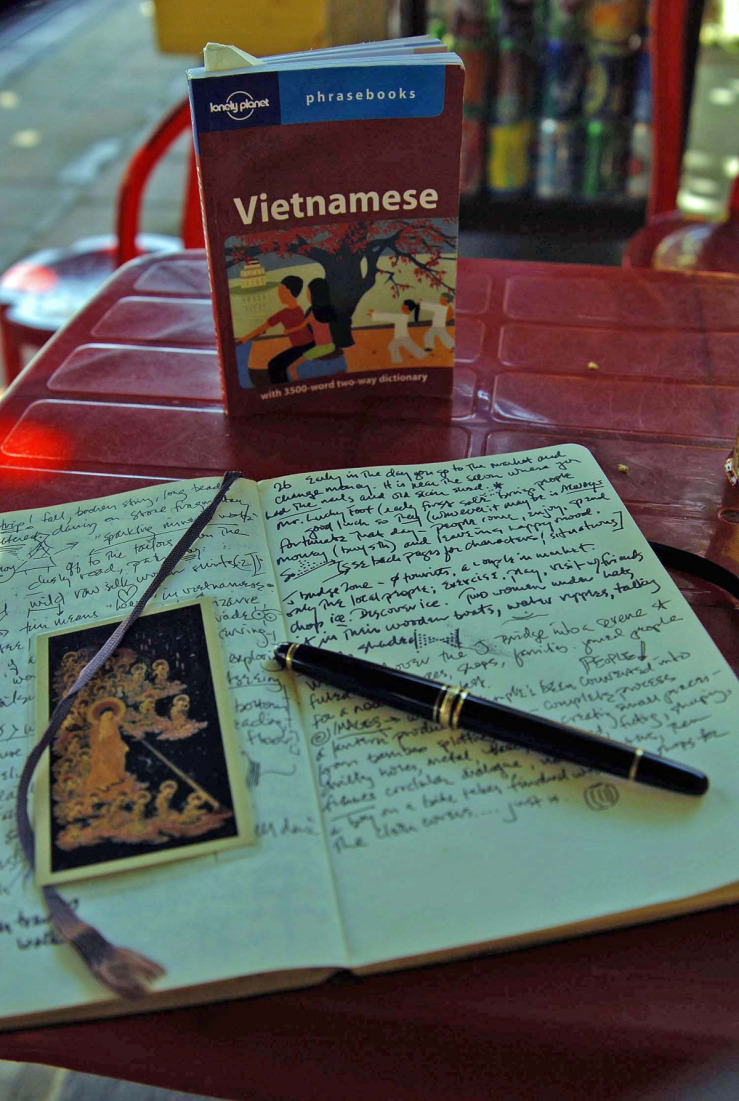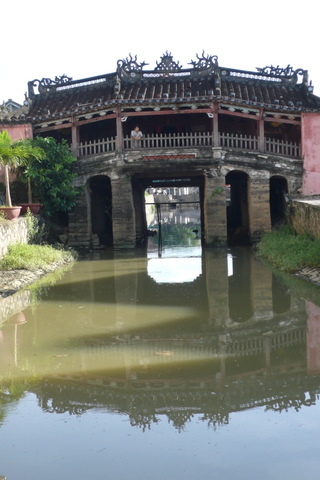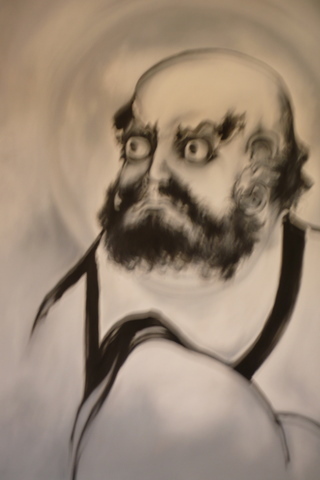Hoi An
We took a bus to Hoi An. We passed through Da Nang, a mess of glass and brass mega resorts swallowing farmland with miles of beachfront developments creating imaginary golf courses faster than speeding high finance and rabid speculation.
Up early I am on the street. A winged shadow caressed my forehead. A black and orange butterfly fluttered in front of my eyes. Touched, grazed, blessed by Psyche. Magic.
I am a prime lens on a 35mm tool. I capture soft light inside the old city. I slow down, feeling free, curious and open, wandering. Before noise and lightning bolts of laughter’s language fills the air. All the tourists sleep off heavy European food and distilled beverages. Streets are empty.
A young woman under a bamboo hat shovels sand. It takes her 21 gestures to fill up a wheelbarrow. No more, no less. 21. Blackjack. She pushes it down a street to a new home project. She dumps it. She repeats the process. All day. Every day. Her Tao.

I walk to the river near an ancient Japanese Bridge built in 1593 and sit near two elderly women. They’re surprised to see a foreigner sitting alone with coffee. Black with ice. I smiled. They smiled and whispered ... strange man alone has a camera it’s so early for him to sit here with us.
We shared humanity, silence and morning light. We communicated without words. I see their lives, childhood, growing up here, families, surviving wars, meeting every morning for conversation, walking and tea.
Supporting each other they walk through quiet streets, past yellow walled homes with red tile roofs protecting long deep brown wooden interiors. Ancestors whisper stories from the 15th-19th century when Hoi An was the major port in Southeast Asia and the first Japanese settlement in southern Vietnam.
Ships unloaded cargo and loaded high-grade silk, paper, porcelain, tea, sugar, molasses, medicines, elephant tusks, Sulphur and mother-of-pearl. Now 400 tailors measure, cut, sew, iron, hang and sell threads.

Women in teddy bear floral pajamas play badminton chasing a shuttlecock. Pajamas make utilitarian sense. Cotton is cheap and easy to wash. You sleep in them, get up, cook, eat, talk to your pajama neighbors, sweep dust, yell at your kids because they are spoiled brats and terrorized since escaping the birth canal, go to the market, buy food, admire new pajamas, return home, eat lunch, talk to your pajama neighbors and take a nap. Pajamas have a warning label on the collar. Remove Before Sex.
Pajamas are cool. One size fits all.
Residents stretch and talk. A leather-faced canoe woman set up her small clay figurines under a tree. The two women finished their tea, gestured goodbye, held hands and walked across a wooden bridge taking care of each other.

Book of Amnesia V1






 Share Article
Share Article
Reader Comments